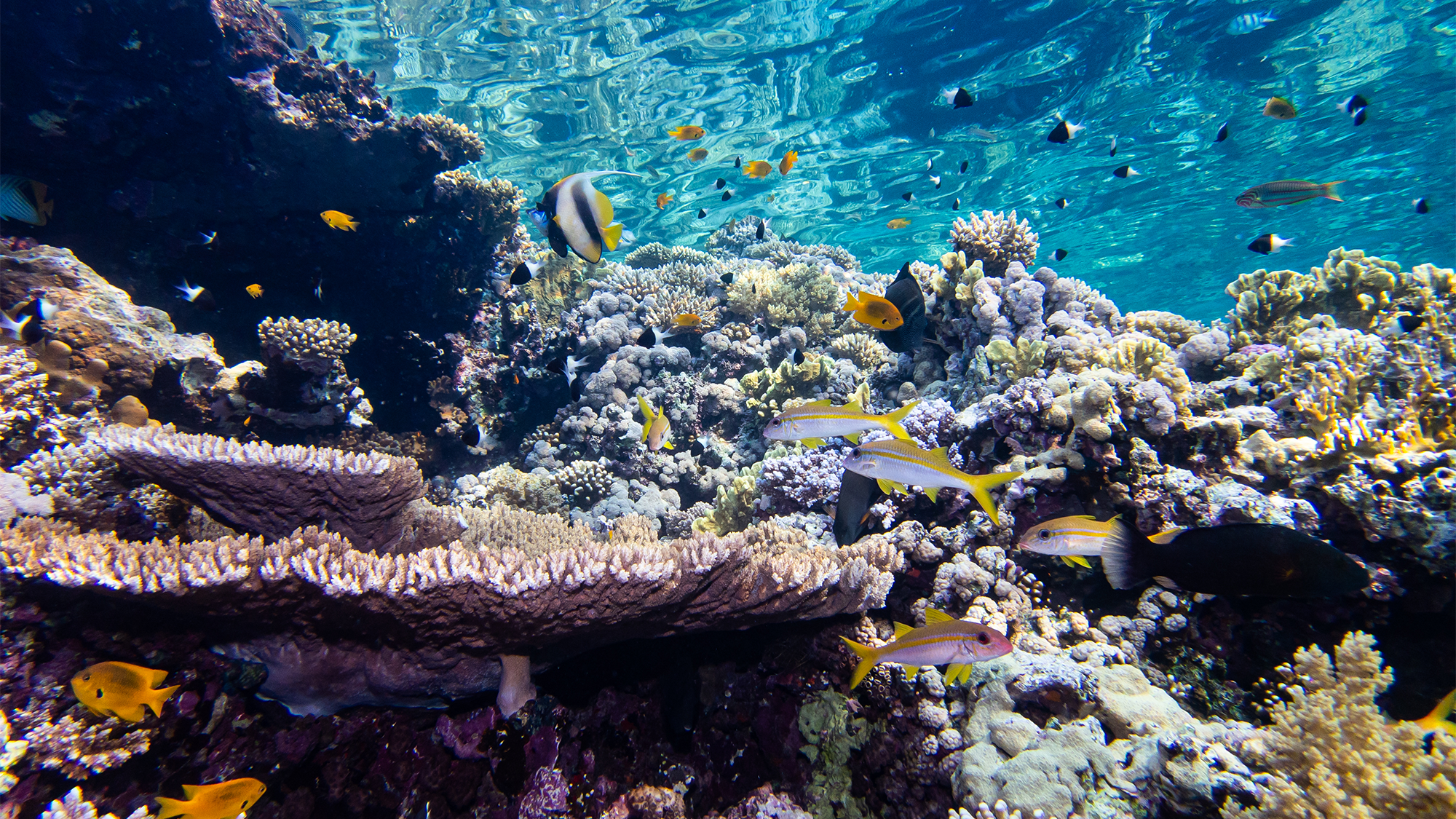

A dark side effect of the electricity that helps society run around the clock is the pollution caused by our increasing numbers of lights at night. Light pollution can obscure stargazing, confusing sea turtles when they hatch, and also could be harming coral reefs.
[Related: The switch to LEDs in Europe is visible from space.]
The light pollution from cities along the coast can trick the reefs into spawning outside of their optimal reproductive times, according to a study published May 15 in the journal Nature Communications.
“Corals are critical for the health of the global ocean, but are being increasingly damaged by human activity. This study shows it is not just changes in the ocean that are impacting them, but the continued development of coastal cities as we try and accommodate the growing global population,” Thomas Davies, a study co-author and conservation ecologist at the University of Plymouth in the United Kingdom, said in a statement.
The moon’s cycles trigger coral to spawn. During these spawning events, hundreds of eggs are released on certain nights of the year. These nights are critical to maintain and recover coral reefs after mass bleaching or other adverse events.
By using a combination of spawning observations and data on light pollution, an international team of researchers showed that the corals exposed to artificial light at night (ALAN) are spawning about one to three days closer to the full moon compared to reefs that are not.
If coral spawn on different nights, coral eggs are less likely to be fertilized and survive to produce adult corals. Population growth is needed now more than ever to help the population recover after disturbing events like bleaching.
The study builds on research from 2021 that mapped out the areas of the ocean that are most affected by light pollution. It found that at 3.2 feet deep, over 7 million square miles of coastal ocean are exposed to biologically important ALAN.
“This study further emphasizes the importance of artificial light pollution as a stressor of coastal and marine ecosystems, with the impacts on various aspects of biodiversity only now being discovered and quantified,” Tim Smyth, a co-author and biogeochemist at Plymouth Marine Laboratory, said in a statement.
The team paired their new data with a global dataset representing 2,135 coral spawning observations taken over the last 23 years. They saw that ALAN is possibly advancing the triggers for spawning by creating a fake illuminance between sunset and sunrise on the nights after the full moon.
[Related: The best ways to reduce light pollution and improve your quality of life.]
The study looked at coastal regions around the world, but the coral reefs of the Red Sea and Persian Gulf in the Middle East are particularly affected by light pollution. These coastlines have been heavily developed in recent years, putting the reefs near the shore at risk.
“Despite the challenges posed by ALAN, corals in the Gulf of Eilat/Aqaba are known for their thermal tolerance and ability to withstand high temperatures. However, a disturbance in the timing of coral spawning with the moon phases can result in a decline in new coral recruits and a reduction in the coral population,” Oren Levy, co-author and marine ecologist at Bar-Ilan University in Israel, said in a statement.
Some individual methods to reduce light pollution, especially for those along the coast, include removing nighttime lighting that is not necessarily needed for public safety, removing all unnecessary light even if it is just one in a backyard, and switching away from white lights to more muted red lights that are less intense.
“By implementing measures to limit light pollution, we can protect these vital habitats and safeguard the future of the world’s oceans. It’s our responsibility to ensure that we preserve the biodiversity of our planet and maintain a healthy and sustainable environment for generations to come,” said Levy.
